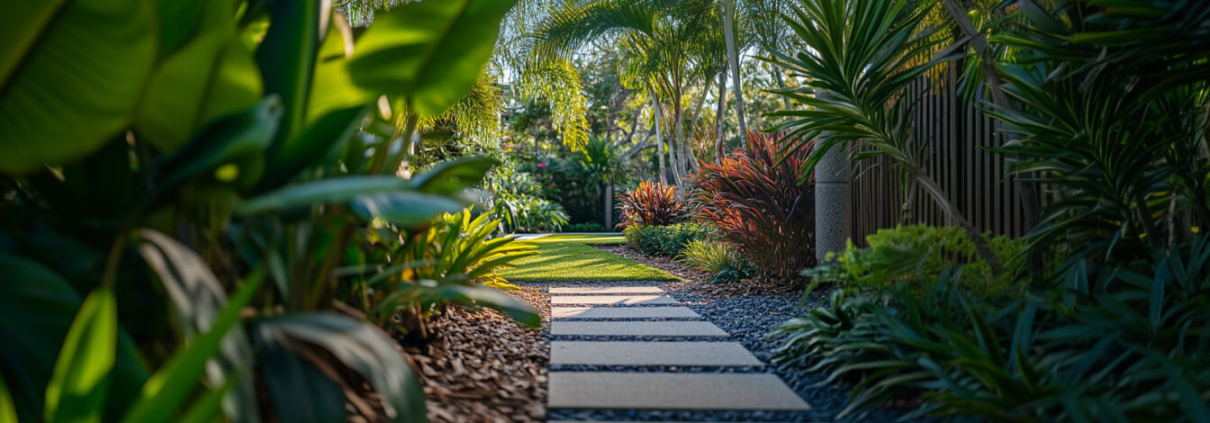Ultimate Guide to Choosing Plants for Brisbane Gardens
Selecting the right plants for your garden in Brisbane involves more than just picking out beautiful varieties. The subtropical climate, diverse soil types, and unique weather patterns of Brisbane mean that the plants you choose should not only fit your aesthetic preferences but also thrive in local conditions. This ultimate guide will walk you through the essential factors to consider and provide tips for choosing plants that will flourish in your Brisbane garden.
1. Understand Brisbane’s Climate and Soil Conditions
The foundation of a successful garden starts with understanding your local environment.
Subtropical Climate
- Temperature Range: Brisbane experiences warm, humid summers and mild winters. Choose plants that can handle high temperatures and humidity.
- Rainfall: With a significant amount of rainfall, select plants that can tolerate both wet and dry conditions or are adaptable to varying moisture levels.
Soil Types
- Soil Composition: Brisbane soils can vary from sandy to clayey. Conduct a soil test to determine your soil’s composition and pH level.
- Soil Improvement: Amend your soil with organic matter like compost to improve drainage and nutrient content, making it suitable for a wider range of plants.
2. Choose Plants Based on Your Garden’s Purpose
Deciding on the purpose of your garden will guide your plant selection.
Decorative Gardens
- Flowering Plants: Opt for vibrant flowering plants like Bougainvillea, Hibiscus, and Gardenias that add colour and fragrance to your garden.
- Ornamental Grasses: Include ornamental grasses such as Lomandra and Pennisetum for texture and movement.
Functional Gardens
- Vegetable and Herb Gardens: Grow vegetables like tomatoes, lettuce, and capsicum, and herbs like basil and mint that thrive in Brisbane’s climate.
- Privacy Screens: Use fast-growing and dense plants like Ficus, Lilly Pilly, or Bamboo to create natural privacy screens.
3. Consider Maintenance and Growth Habits
Choosing plants that align with the level of maintenance you’re willing to commit to will ensure your garden remains healthy and attractive.
Low-Maintenance Plants
- Native Plants: Consider native species such as Grevillea, Callistemon, and Banksia that require minimal care and are well adapted to Brisbane’s climate.
- Succulents and Cacti: For minimal watering needs, succulents like Agave and Cacti can be excellent choices.
Fast-Growing vs. Slow-Growing Plants
- Fast-Growing Plants: If you’re looking for quick results, fast-growing plants like Murraya and Clumping Bamboo will quickly fill in your garden.
- Slow-Growing Plants: For a more measured approach, select slow-growing plants that will develop over time and require less frequent pruning.
4. Plan for Seasonal Interest
To keep your garden appealing throughout the year, incorporate plants that offer seasonal interest.
Summer Blooms
- Tropical Flowers: Plants like Hibiscus, Plumbago, and Bougainvillea thrive in the summer heat and offer vibrant blooms.
Winter Greens
- Evergreen Plants: Choose evergreen plants like Jasmine, Pittosporum, and Camellia to provide year-round greenery and structure.
5. Incorporate Native Plants for Sustainability
Native plants are not only beautiful but also beneficial for the local ecosystem.
Benefits of Native Plants
- Water Efficiency: Native plants are adapted to local conditions and typically require less water once established.
- Wildlife Support: They provide food and habitat for local wildlife, including birds, bees, and butterflies.
Recommended Native Plants
- Ground Covers: Native ground covers such as Dichondra and Myoporum can effectively manage soil erosion and reduce weed growth.
- Feature Plants: Use striking native plants like the Waratah, Kangaroo Paw, and Bottlebrush as focal points in your garden design.
6. Factor in Sun and Shade Conditions
Assess the light conditions of your garden to choose plants that will thrive in those environments.
Full Sun Plants
- Sun-Loving Varieties: Plants like Lavender, Marigold, and Bougainvillea need plenty of sunlight and are perfect for sunny spots.
Shade-Tolerant Plants
- Shade Plants: Opt for shade-tolerant plants like Ferns, Hostas, and Colocasia for areas with limited sunlight.
7. Plan for Soil Erosion and Drainage
Proper plant selection can help manage soil erosion and improve drainage.
Erosion Control Plants
- Ground Covers: Use ground covers such as Creeping Juniper and Blue Star Creeper to stabilize soil and prevent erosion.
- Cover Crops: Incorporate cover crops like Sweet Potatoes or Cowpeas to improve soil structure and prevent runoff.
Improving Drainage
- Drainage Plants: Plants like Clumping Bamboo and Lomandra are effective in areas prone to waterlogging, as they can tolerate wet conditions.
8. Use Companion Planting for Better Results
Companion planting involves growing certain plants together for mutual benefits.
Benefits of Companion Planting
- Pest Control: Planting Marigolds with vegetables can deter pests and protect your crops.
- Nutrient Sharing: Some plants, like Beans, can enrich the soil with nitrogen, benefiting neighbouring plants.
Popular Combinations
- Herbs and Vegetables: Grow herbs like Basil and Parsley alongside vegetables like Tomatoes and Peppers to enhance growth and flavour.
- Flowers and Vegetables: Pair flowers like Nasturtiums with vegetables to attract beneficial insects and improve yields.
9. Budget and Plan for Planting
Effective planning and budgeting are key to a successful garden project.
Budgeting for Plants
- Cost Considerations: Factor in the cost of plants, soil amendments, and any necessary garden infrastructure.
- Bulk Purchases: Purchase plants in bulk or from local nurseries for potential cost savings.
Planting Plan
- Design Layout: Sketch out your garden design and placement of plants to ensure a balanced and cohesive look.
- Timing: Plan your planting schedule according to the optimal seasons for each plant type to ensure successful establishment.
Choosing the right plants for your Brisbane garden involves considering factors like climate, soil, garden purpose, and maintenance needs. By understanding these elements and planning accordingly, you can create a thriving garden that enhances your property’s beauty and functionality. For expert advice and assistance in selecting and planting the best varieties for your garden, contact Live Outdoors. Our team is dedicated to helping you design and cultivate a stunning outdoor space that perfectly suits your Brisbane home.



Leave a Reply
Want to join the discussion?Feel free to contribute!